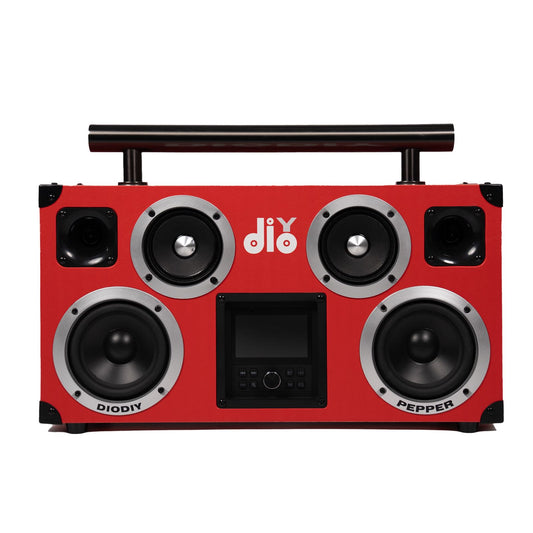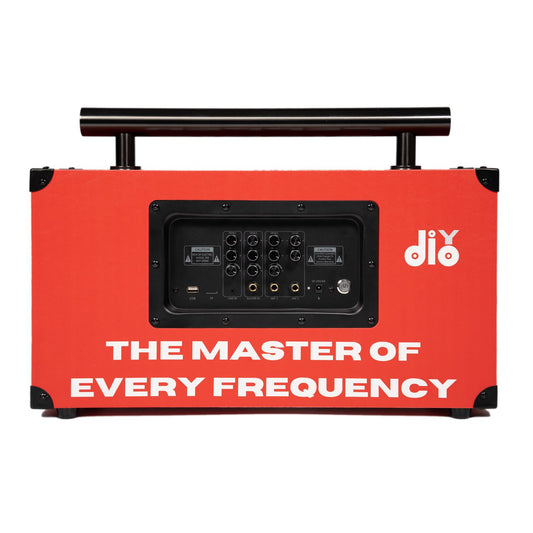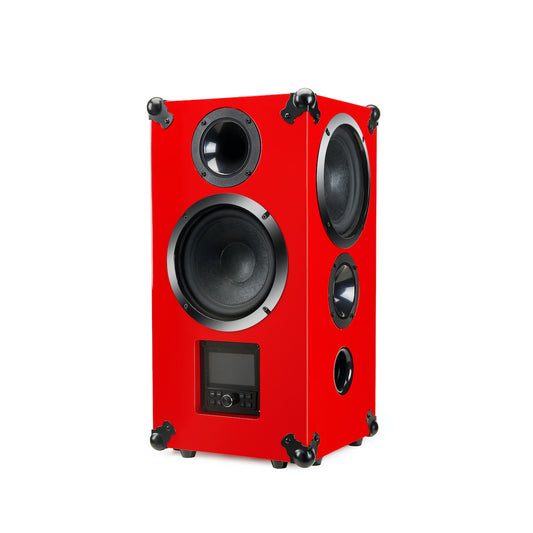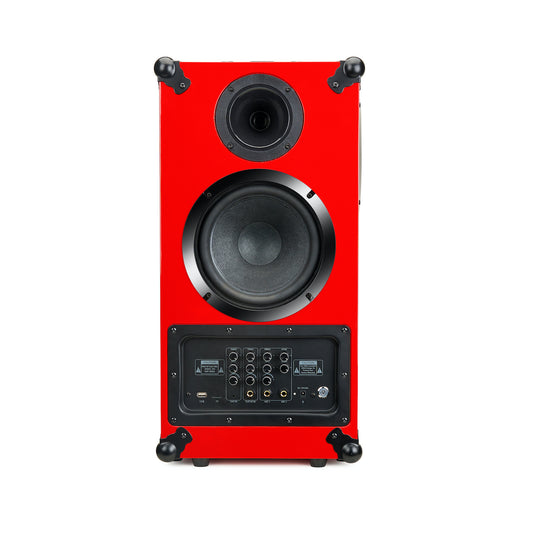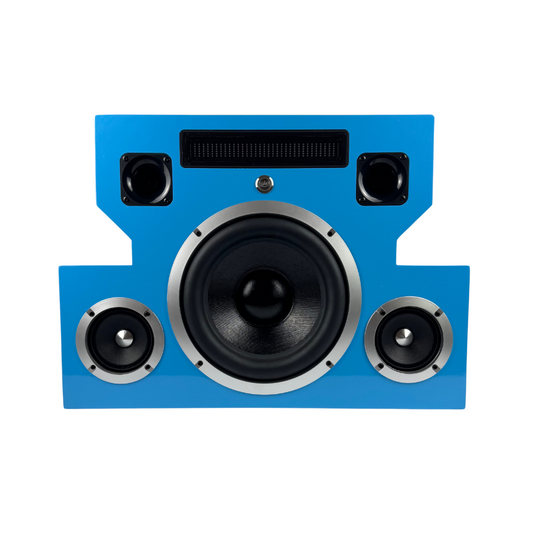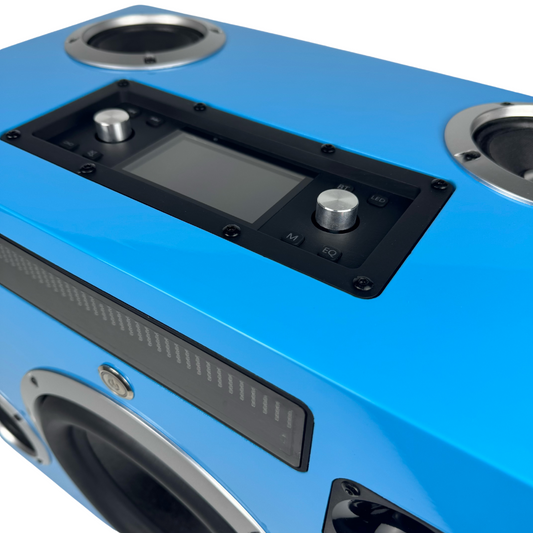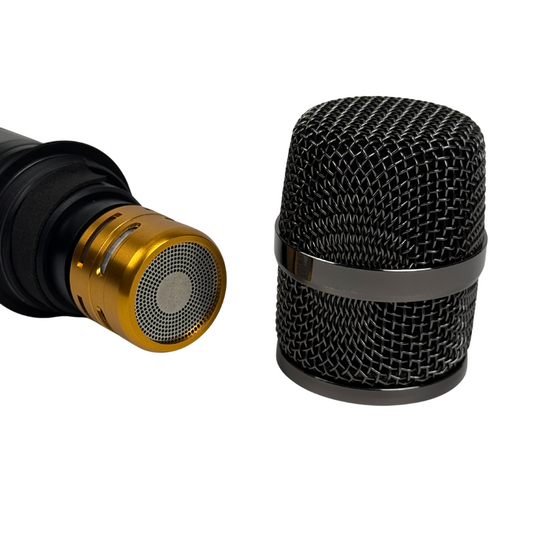
Can I Use a Full-Range Driver for My Custom Speaker?
Share
When building a custom speaker system, one of the biggest decisions you’ll face is choosing the right type of drivers. Should you go with a full-range driver, which promises simplicity and ease of design, or opt for a more complex setup that includes tweeters, midrange drivers, and woofers? Each approach has its own advantages and drawbacks, and the choice you make will impact the overall quality of your sound experience.
In this blog, we’ll explore whether using a full-range driver is a good choice compared to a more conventional setup involving multiple drivers. We’ll discuss the advantages and limitations of each, so you can decide what works best for your custom speaker system and how it aligns with your desire for an unparalleled music experience.
What is a Full-Range Driver?
A full-range driver is a single speaker driver designed to reproduce the entire range of audible sound frequencies, from low bass to high treble. It is intended to cover the full spectrum of human hearing, typically ranging from 20 Hz to 20 kHz. Full-range drivers are popular in certain applications, such as DIY speaker projects, compact speaker systems, and even high-end audiophile setups, thanks to their simplicity and the ability to avoid the use of crossovers.

A typical full-range driver attempts to achieve wide frequency coverage using a combination of technologies, such as a whizzer cone, specialized diaphragm materials, or phase plugs to extend the response to higher frequencies. However, there are inherent trade-offs to using a single driver to reproduce all frequencies, especially when compared to a system that employs multiple drivers.
The Conventional Approach: Using Tweeter, Midrange Driver, and Woofer
In a more conventional custom speaker setup, multiple specialized drivers are used to handle different parts of the frequency range:
- Woofer: Designed to handle the low frequencies (typically 20 Hz to 500 Hz), producing deep, impactful bass.
- Midrange Driver: Handles middle frequencies (typically 500 Hz to 5 kHz), which include most vocal and instrumental sounds.
- Tweeter: Covers the high frequencies (typically 5 kHz to 20 kHz), reproducing the clarity and detail in cymbals, strings, and other treble sounds.
These drivers are paired with a crossover network that divides the audio signal into different frequency bands, ensuring that each driver receives the appropriate part of the spectrum. This approach allows each driver to operate within its optimal range, resulting in a more balanced and high-quality sound.
Full-Range Driver vs. Multiple Drivers: Pros and Cons
Advantages of Using a Full-Range Driver
- Simplicity in Design: One of the main advantages of using a full-range driver is its simplicity. Since a full-range driver is designed to reproduce all audible frequencies, there’s no need for a crossover network to split the audio signal. This makes the design and construction process simpler and reduces the potential for phase issues or other complications that can arise from using multiple drivers.
- Single Point Source: A full-range driver functions as a single point source, meaning that all frequencies originate from the same physical location. This can lead to a more coherent soundstage and better imaging, as there are no timing or alignment issues between multiple drivers. For listeners who prioritize sound coherence, this can be a significant advantage.
- Compact Enclosure: Using a single full-range driver allows for a more compact speaker enclosure, making it a popular choice for smaller speaker designs. If space is a concern or you’re looking to build a portable speaker, a full-range driver may be the ideal solution.
- Reduced Costs: By using a single driver, you can reduce costs in both materials and construction time. You won’t need to purchase multiple drivers, crossovers, or larger enclosures, which can help keep the cost of your custom speaker project more manageable.
Limitations of Using a Full-Range Driver
- Limited Frequency Response: While a full-range driver is intended to cover the entire frequency range, it often struggles to do so effectively at the extremes. Low bass frequencies and high treble frequencies can be difficult for a single driver to reproduce accurately, which may result in a lack of deep bass and reduced high-frequency detail. This can limit the overall sound quality, especially when compared to a multi-driver setup.
- Compromises in Performance: Because a full-range driver is trying to cover all frequencies, it inevitably makes compromises. For example, a full-range driver might be able to produce midrange frequencies well, but it may not be able to move enough air to deliver powerful bass or provide the delicate, quick movements needed for accurate treble reproduction. This results in a less dynamic and less detailed listening experience.
- Reduced Power: Handling A full-range driver typically has lower power handling compared to dedicated woofers or midrange drivers. This means it may not be able to produce high volumes without distortion, especially when tasked with reproducing bass-heavy music. If you enjoy listening to music at high volumes or want impactful bass, a full-range driver may not be the best choice.
Advantages of Using Multiple Drivers: Tweeter, Midrange Driver, and Woofer
- Specialized Frequency Handling: In a multi-driver system, each driver is designed to handle a specific part of the frequency spectrum. Woofers are optimized for low frequencies, midrange drivers are optimized for mid frequencies, and tweeters excel at reproducing high frequencies. This specialization allows for a more accurate and balanced sound, as each driver is able to perform optimally within its designed range.
- Improved Clarity and Detail: By using dedicated drivers for each frequency range, a multi-driver speaker setup can achieve better clarity and detail compared to a full-range driver. The tweeter is able to reproduce high-frequency details with precision, while the midrange driver ensures that vocals and instruments are clear and natural. The woofer provides deep, impactful bass that a full-range driver simply cannot match.
- Higher Power Handling and Dynamic Range: A multi-driver system is capable of handling more power and producing a wider dynamic range. Each driver only has to manage its assigned frequency range, allowing it to operate more efficiently and handle higher power without distorting. This means that multi-driver speakers can produce higher volumes and deeper bass with greater ease.
- Unparalleled Music Experience: When multiple drivers are properly combined, they can produce a full range of sound—from 20 Hz to 20 kHz—with remarkable accuracy and detail. This provides an unparalleled music experience, as you’ll be able to hear the full depth and complexity of your favorite tracks, whether it’s the rumble of a bassline or the delicate shimmer of a cymbal.
When to Choose a Full-Range Driver for Your Custom Speaker
While a multi-driver setup offers a more immersive and high-quality listening experience, there are situations where a full-range driver can be a good choice for a custom speaker:
- Simplicity and Compact Design: If you’re building a compact speaker or a DIY project and want to keep things simple, a full-range driver can be an excellent option. It allows you to avoid the complexity of crossovers and multiple drivers, making it easier to construct and tune your speaker.
- Budget-Friendly Builds: If you’re working with a limited budget, a full-range driver can help you save on costs. Instead of purchasing multiple drivers, a crossover network, and a larger enclosure, you can use a single driver to achieve decent sound quality at a lower price.
- Low to Moderate Listening Levels: If you primarily listen to music at low to moderate volumes and don’t need a lot of bass, a full-range driver can provide a satisfactory listening experience. It may not offer the deep bass or sparkling highs of a multi-driver setup, but it can still produce enjoyable sound for casual listening.
High Quality And Cost-Effective Woofer
When to Choose Multiple Drivers for Your Custom Speaker
For those who want the best possible music listening experience, a multi-driver setup is the way to go. Here’s when you should consider using tweeters, midrange drivers, and woofers for your custom speaker system:
1. Unparalleled Audio Quality
If your goal is to achieve high-quality, immersive audio, using multiple drivers will provide a more balanced and accurate sound. The ability to accurately reproduce each part of the frequency spectrum is key to achieving the unparalleled music experience that audiophiles desire.
2. Bass-Heavy Music or High Volumes
For genres like electronic, hip-hop, or rock, where deep bass is a significant part of the experience, a woofer is essential. A full-range driver will struggle to reproduce the low-end power needed for these genres, while a dedicated woofer will excel. Similarly, if you like to listen to music at high volumes, a multi-driver setup will be able to handle the increased power without distortion.
3. HiFi Systems and Home Theaters
For HiFi systems or home theater setups, using multiple drivers is essential. The ability to reproduce the full frequency spectrum with accuracy is critical for both music and movies. With a tweeter handling the highs, a midrange driver taking care of vocals and instruments, and a woofer delivering the low-end punch, you’ll get the most immersive and dynamic audio experience possible.
Conclusion: Choosing the Right Setup for Your Custom Speaker
So, can you use a full-range driver instead of a complete set of tweeter, midrange driver, and woofer for your custom speaker? The answer is yes—if you want simplicity, a compact design, and a more budget-friendly option. A full-range driver is capable of producing enjoyable sound, especially for casual listening or small, simple speaker projects.
However, if you’re aiming for the highest quality sound and an unparalleled music experience, a multi-driver setup is the better choice. By using specialized drivers for lows, mids, and highs, you can achieve a more balanced, detailed, and powerful sound that fully captures the depth and richness of your music. The combination of a woofer, midrange driver, and tweeter ensures that each frequency range is reproduced with precision, resulting in a superior listening experience that a single full-range driver simply cannot match.
Ultimately, the choice comes down to your specific needs, preferences, and the type of listening experience you’re trying to achieve. Whether you choose a full-range driver or multiple drivers, understanding the trade-offs will help you build the custom speaker that meets your expectations.
If you need further guidance on choosing the right components for your custom speaker system, feel free to contact us. We’re here to help you create a speaker system that delivers the unparalleled audio quality you’re looking for.



